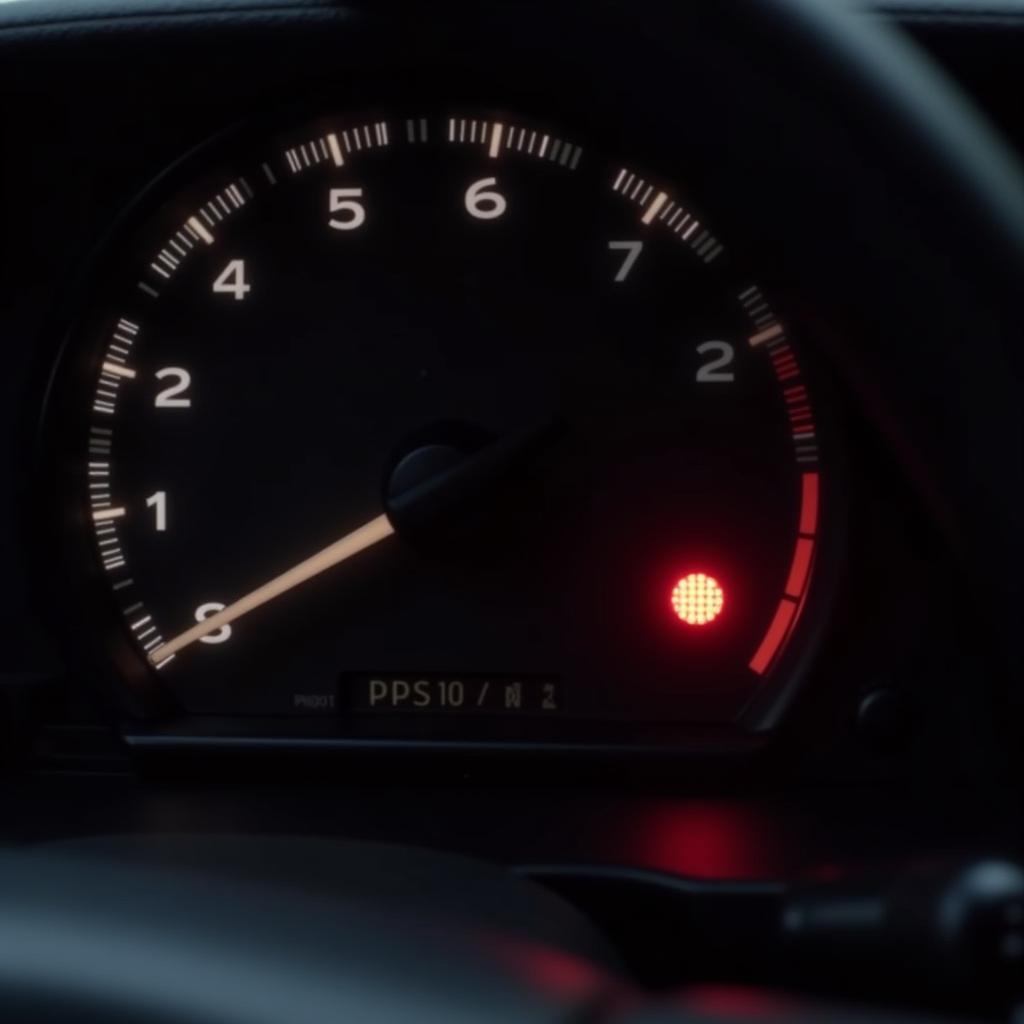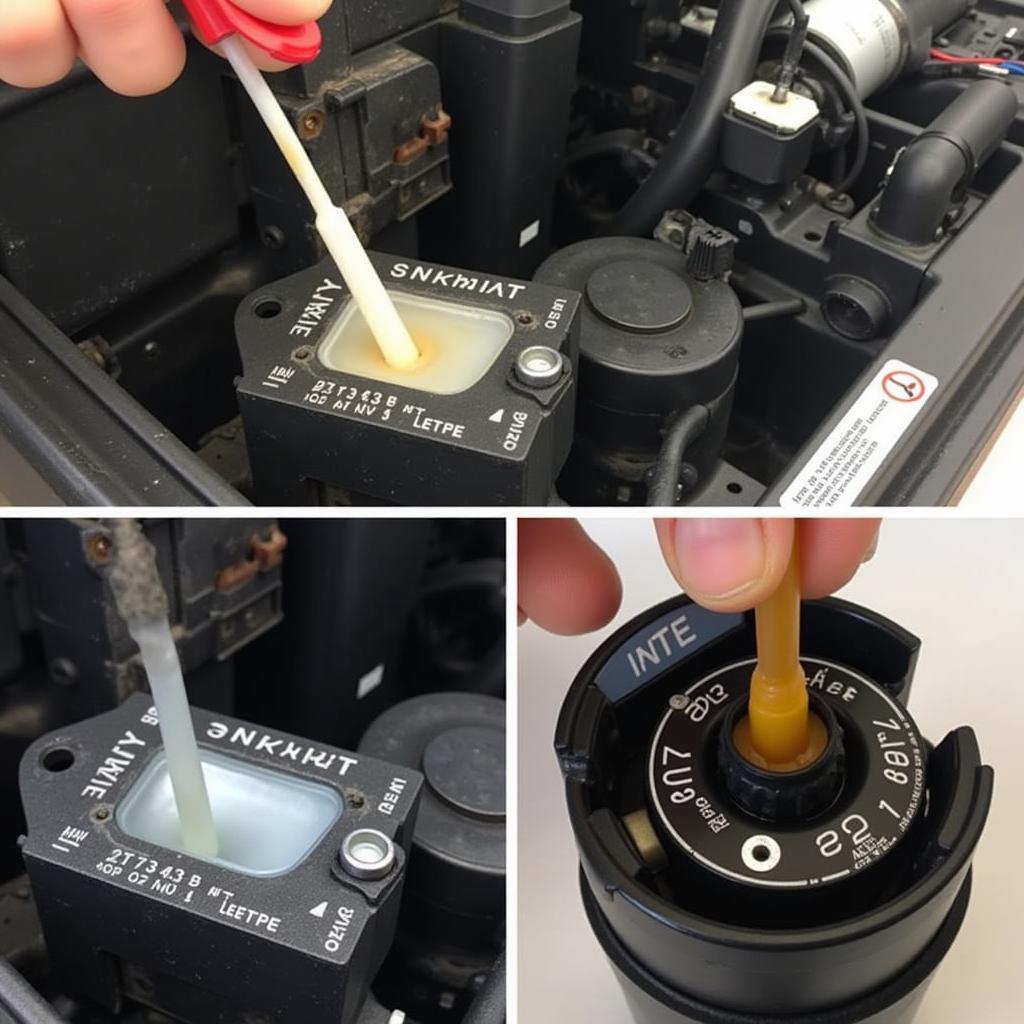A brake warning light illuminating on your 911SC dashboard is a serious signal, demanding immediate attention. While it might seem alarming, understanding the common causes and potential solutions can help you address the issue effectively.
 911SC Brake Warning Light on Dashboard
911SC Brake Warning Light on Dashboard
Decoding the 911SC Brake Warning Light
The brake warning light on your 911SC is part of a critical safety system. When it illuminates, it signifies a potential problem within your braking system that requires immediate inspection. Ignoring this warning light could lead to brake failure, putting you and others at risk.
Common Causes of a 911SC Brake Warning Light
Several factors can trigger the brake warning light on your 911SC. These range from simple issues to more complex problems within the braking system:
-
Low Brake Fluid: One of the most common culprits is low brake fluid. As brake pads wear down, the brake fluid level naturally drops. If the level falls below a safe minimum, the warning light will activate.
-
Worn Brake Pads: Your 911SC’s brake pads have a finite lifespan. As they wear down over time and use, their effectiveness diminishes. A sensor within the brake system monitors pad thickness, triggering the warning light when replacement is necessary.
-
Brake Fluid Leak: A leak in the brake lines, calipers, or wheel cylinders can lead to a dangerous drop in brake fluid pressure. This situation is often accompanied by a spongy or soft brake pedal feel.
-
Faulty Brake Light Switch: The brake light switch activates the brake lights when you press the pedal. A malfunctioning switch can sometimes trigger the brake warning light as well.
-
ABS Issue: If your 911SC is equipped with an Anti-lock Braking System (ABS), a problem with this system, such as a faulty sensor, can also illuminate the brake warning light.
 Checking Brake Fluid Level in a 911SC
Checking Brake Fluid Level in a 911SC
Troubleshooting the Brake Warning Light
Before you begin: Remember that working on your car’s braking system requires caution. If you’re not comfortable performing these checks, consult a qualified mechanic immediately.
-
Check Brake Fluid Level: Open the hood and locate the brake fluid reservoir. Check the fluid level against the “Min” and “Max” markings on the reservoir. If the level is low, add the appropriate DOT specification brake fluid as recommended in your owner’s manual.
-
Inspect for Leaks: Carefully examine the brake lines, calipers, and wheel cylinders for any signs of fluid leakage. Look for wet spots, drips, or dampness.
-
Check Brake Pad Thickness: Visually inspect the brake pads through the spaces between the wheel spokes. If the pad material is significantly worn down, it’s time for a replacement.
Seeking Professional Help
While some causes of a 911SC brake warning light are relatively straightforward, others require specialized knowledge and tools to diagnose and repair. If you’re unsure about any aspect of your brake system, or if the warning light persists after basic checks, consult a qualified Porsche mechanic or a trusted automotive specialist.
Remote Diagnostics and Software Solutions
Advancements in automotive technology have led to the rise of remote diagnostics and software solutions for certain vehicle issues. However, it’s important to remember that brake system issues generally require physical inspection and repair due to their critical safety implications.
“Remote diagnostics can be incredibly helpful for identifying potential issues, including some related to the braking system,” says Mark Stevenson, a veteran automotive electrical engineer specializing in remote diagnostics. “However, physical inspection is always necessary to confirm the diagnosis and carry out any necessary repairs safely.”
 Mechanic Inspecting 911SC Brake System
Mechanic Inspecting 911SC Brake System
Don’t Ignore the Warning
The brake warning light on your 911SC is a critical safety indicator. Addressing it promptly and effectively can mean the difference between a minor inconvenience and a potentially dangerous situation. Remember, when it comes to your safety and the safety of others on the road, a proactive approach is always the best course of action.
